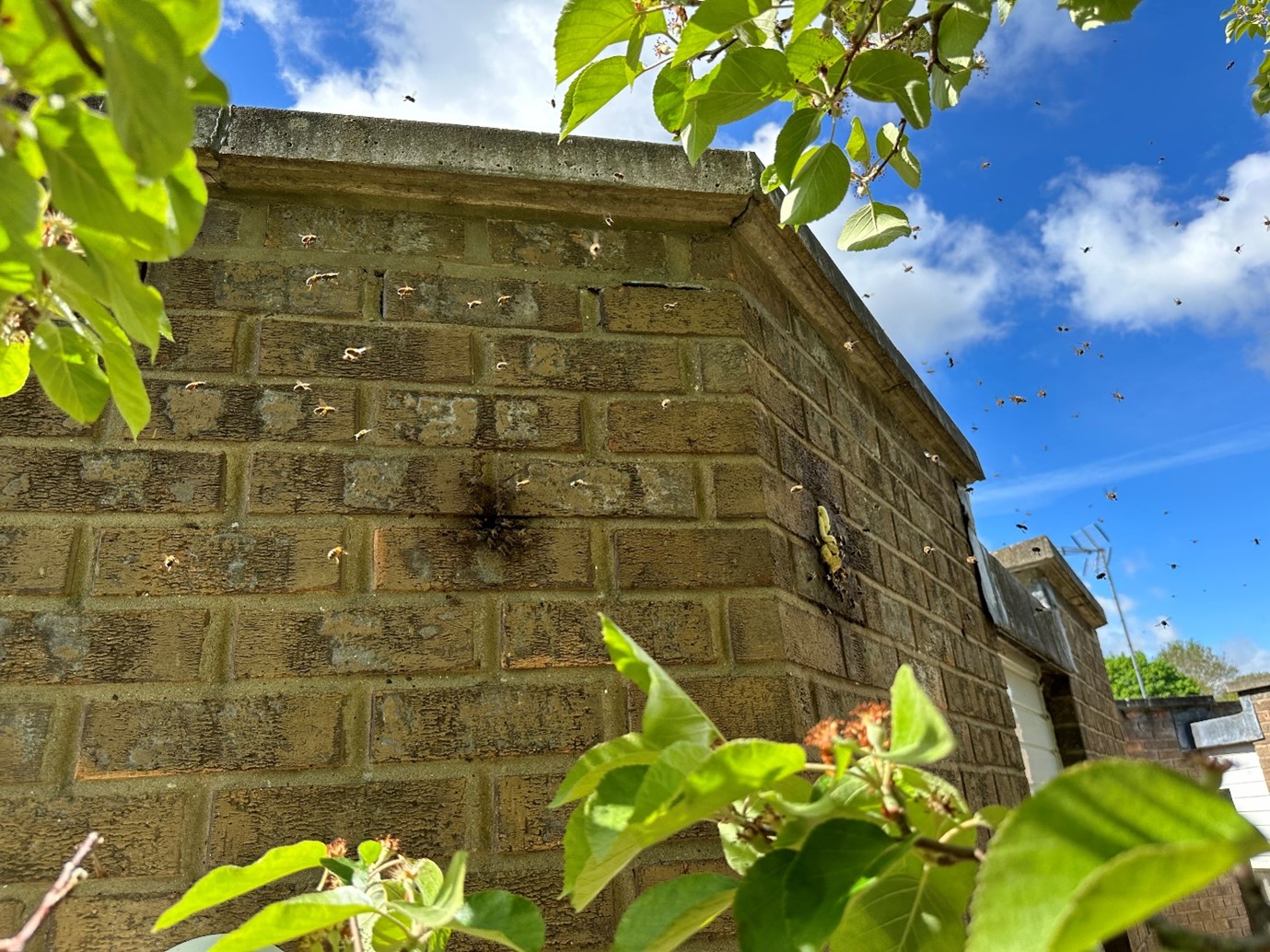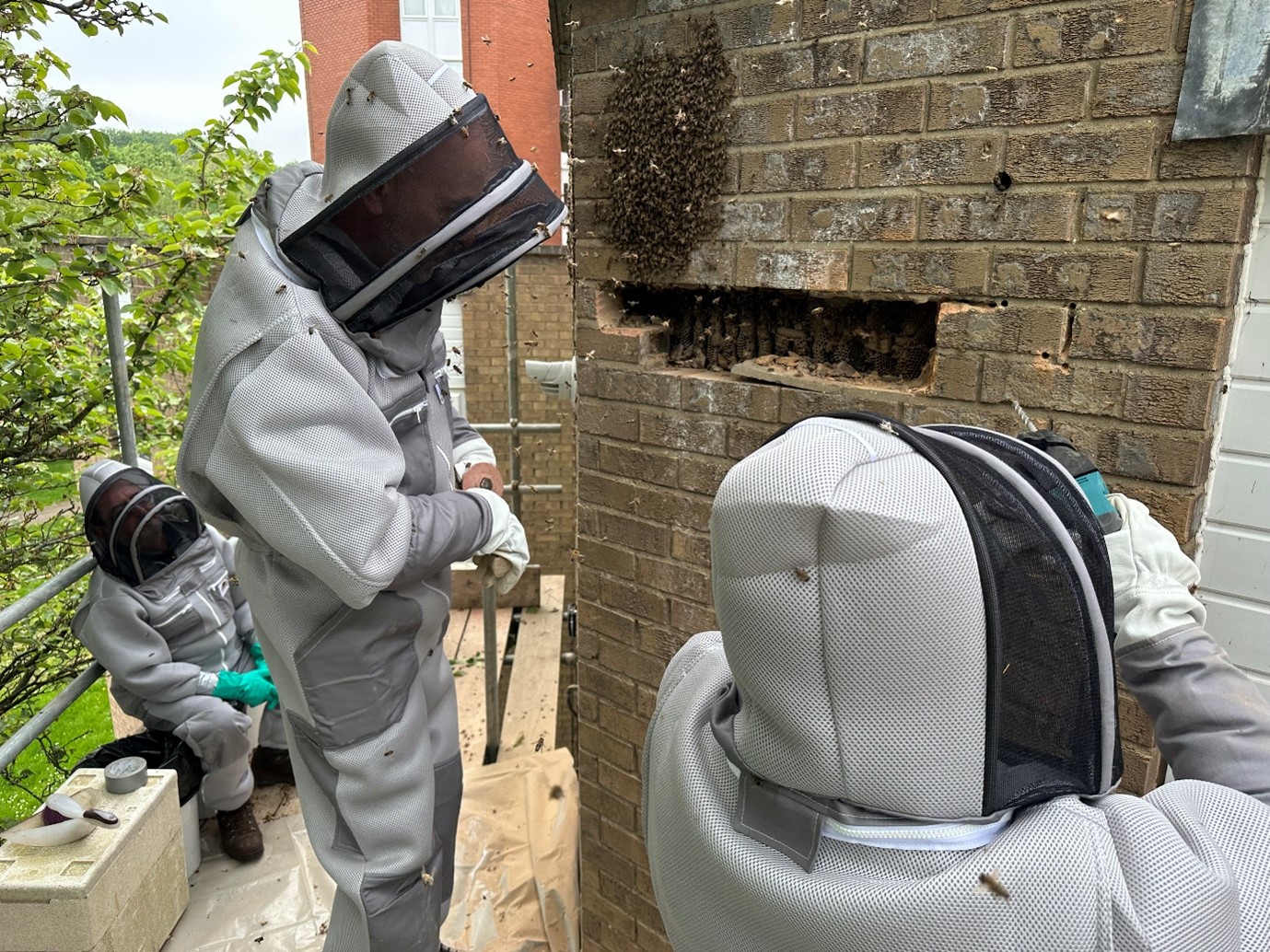Northampton Honey Bee Removal
Introduction
In the bustling Eastern District of Northampton, a colony of honeybees had made an unexpected home in the external wall of a second floor flat, much to the consternation of its residents. This detailed account provides insights into a non-invasive, environmentally friendly, and safe method employed to deal with such a situation.
Location: Second-floor flat, Eastern District, Northampton.
Background: For several years, a tenant observed regular bee activity around their window, prompting the intervention by their Housing Association. A subsequent inspection revealed that the bees had comfortably nested within the building’s outer walls.
Methodology:
- Initial Survey: The process commenced with a full site survey inside and outside, including a thermal imaging examination, a non-intrusive technique perfect for detecting honeybee activity within structural walls. This was undertaken in the summer of 2022.
- Proposal: Given the delicate nature of bees, a live removal method was proposed. To ensure immediate relief for the tenant, temporary mesh fittings were installed on the windows, allowing for ventilation without any bee intrusions. The removal was scheduled for early in Spring 2023, as this would mean the number of bees and amount of honey stored was at a minimum.
- Equipment Setup: To access the location of the bee colony, a scaffold was erected. This setup provided the necessary elevation and stability, enabling the exact location of the comb to be ascertained.
- Comb Extraction: This phase required collaboration with a multi-trade company to safely remove a section of the external wall of the building to expose the cavity. The sizable comb, measuring around 4 feet by 3 feet, was then extracted. Environmental considerations mean the team employ sustainable methods, converting the old comb into beeswax, which is subsequently used in various products, such as beeswax candles.
- Bee Transfer: Some of the comb containing brood was transferred into frames in a temporary hive and relying on the bees’ natural instincts, they were lured back to this comb. Over the course of the day, the bees transitioned from their original dwelling to this new hive.
- Queen Bee Handling: Recognizing the queen bee’s pivotal role in the colony, she was delicately secured using a queen clip (a plastic device that can safely contain a queen bee), and she was placed into the new hive. This action ensured that the colony would remain settled in their new abode.
- Post-Extraction Process: Once the bees and comb had been removed, the cavity was cleaned, deodorized, and prepped for the subsequent building reinstatement works.
- Bee Relocation: The extracted bee colony was transported to a quarantine apiary. This step is crucial to monitor the bees for potential diseases, ensuring their well-being and that of other bees they might come into contact with in the future.
Outcome:
This intervention showcased a perfect blend of expertise and sensitivity. The result was the successful relocation of a honeybee colony in a manner that preserved their lives, ensured the safety and peace of mind of the tenants. The bees, now under observation in the quarantine apiary, await their eventual transfer to a permanent and more suitable habitat.
Honey Bee Removal with iX5 Pest Control
We offer bee removal services for domestic premises and businesses in Northampton, Daventry, Rugby, Market Harborough, Towcester, Brackley, Wellingborough, Kettering, Corby, Olney and all of the surrounding areas. Our team of specialists are available both evenings and weekends at no extra cost. Should you require assistance call us on 01604 328545, email [email protected] or use our simple contact form.


